- Home
- Colm Toibin
Synge Page 8
Synge Read online
Page 8
February 12:
An Englishman at a party tells me he remembers seeing Beckett walking in the Jardins de Luxembourg. ‘Always impeccably dressed’, he says. ‘I was amazed; these beautiful Italian suits, really expensive, perfectly cut. I don’t know what I expected from reading him, some kind of tramp, I suppose. More Irish.’ Maybe he didn’t mean it like that.
February 17:
A young Arab man, beautiful, quick-smiled, in an expensive-looking Aran jumper argues with a policeman about his motorbike – tax maybe, or parking. It’s snowing slightly, white flakes on black hair. You’d know him again if his body came washing in on the tide. The policeman gives up, shrugs, ignores the small audience, steps hard on the pedals of his own bike, and away. A lovely girl steps out of Café Ness carrying the trophy leather jacket. She kisses her hero, they laugh, heads thrown back to catch snow in their mouths. Then she gets on behind him and they zoom off, giddy, vivid, the lights of the Eiffel Tower spangling the night sky.
February 23:
In a small restaurant on Rue du Pot de Fer I look around and notice five people wearing Aran knits. One chunky polo-neck; one handsome, worn, off-white jersey with what looks like another green one underneath; a waistcoat and two cardigans. All at different tables. American, Chinese and French. Maybe they’re expecting really bad floods, maybe they know something I don’t know. If the drunken woman were here she’d have a great time.
February 27:
I’m thinking about a moment from years ago, a moment that reminds me of the cruel truthfulness at the heart of Playboy. It’s in a pub in Leitrim. A publican stares entranced at the wildlife programme on the telly over the bar. A cheetah is chasing a gazelle. ‘Look at it, look at the speed of him, the power.’ Her eyes sparkle with excitement. ‘He’ll catch her yet, he’ll bring her down - look at that.’ The cheetah downs the exhausted prey and mauls it. ‘That’s the stuff! That’s the end of hunger for him.’ She turns away reluctantly to fill a pint, glancing back to see what’s on next. She has the loveliest laugh you might ever hear – gay and light and without a care in the world. It reminds me so much of Pegeen’s line about the hanged dog and the licence and the peeler. The casual cruelty, the jubilant tilt of the head, the lilt of the language.
You’d wonder what became of Pegeen after the Playboy went east. Did she give in and marry Shaneen Keogh? Or become a committed spinster, running the business with a bitter grip when Michael James shambled to the grave? Maybe she went to America, lived to be ninety, came back to Mayo a loud Yank like Gar’s aunt in Philadelphia Here I Come. Saw the first man on the moon and JFK. Boasted about her youthful fame in a hothouse Rest Home on the Upper West Side. ‘You never lost it, Peggy, you musta kissed that Blarney Stone.’ Shambling on her zimmer frame. Maybe she drowned on the Titanic.
Or survived.
March 1:
Sending the almost-final draft of Deirdre (A Cry From Heaven) to Jocelyn Clarke at the Abbey. Despite cuts it’s four pages longer. But then there’s the new long speech for Ness at the end and a longer one for Conor. I think it’s stronger – tighter, leaner; I’ve got rid of words, phrases, lines that seemed wrong or hokumy. ‘And the snow begins’ is gone – Olivier, who is to direct, will be delighted …
***
A friend here says to me:
‘It’s a really brave thing to make a new Deirdre, really gutsy.’
‘Or mad,’ I think to myself.
‘And know what?’ she says ‘one thing your Deirdre must have – she must have balls!’
March 3:
Bitterly cold here: the fountain in the Place de l’Estrapade is frozen solid, shattered stalactites of water caught in mid-air. The cast-metal cherub faces gleam out from behind thin masks of ice, made more beautiful, somehow, by the transparent sheen. Someone said it was minus thirteen degrees last night; not sure I believe that – but you wonder how the homeless survive sleeping out on the street corners around here. I’m reminded of a night in autumn (I think September) 1995 when I noticed a homeless couple asleep in the arches at the side of the Odéon. The Abbey’s great production of The Well of the Saints had just opened and I was leaving the theatre late. I stopped to watch the man and woman wrapped tight in their sleeping bags, rough faces in a kind of alert slumber. There was a crutch on the ground between them. I put money into each sleeping bag and watched them for another while. I was going south the next day and I thought about Martin and Mary Doul and their journey south across ‘a power of deep rivers with floods in them … ’ I was glad to be heading towards the sun instead, and I liked to imagine this pair waking to find the unexpected money, picking up sticks and shuffling off into the dawn. Probably cursing whoever had given them so little.
March 5:
I wonder about Yeats’s famous exhortation to Synge to go back to Ireland and go to the Aran Islands etc. To be taken with a slight pinch of salt, I’d say. Like these few anecdotes that come back out of nowhere in particular: in 1997 or ’98 a man on a minibus near Foxford assured me that Yeats had had an affair with F.R. Higgins. ‘They were definitely lovers,’ he said, ‘a teacher of mine told me for a fact.’
Then there was the story I heard about a musician, now dead, who claimed the great poet had made a pass at him – on the top of Ben Bulben! And the yarn about the local man, well sozzled, who wandered into a session of the Yeats Summer School in Drumcliffe about thirty years ago. The academics are considering the meaning of the famous epitaph, and yer man sways onto his feet. ‘Cast a cold eye,’ he slurs, ‘on life on death.’ He pauses for dramatic effect, looks around the room. Spits it out: ‘And the horse goes clippetty fucking clop!’
March 7:
Looking over earlier notes on why I wanted to write a new Deirdre: all the themes here: love, sex, power, jealousy, conflict, violence, death. Easy to see why Yeats and Synge were drawn to the story – it doesn’t come much more primal. It’s still a challenge to make life of it all, to make ‘the saga people’ live and breathe and love and fuck.
And more formally: I was fascinated by Deirdre long before I knew that anyone at all had written a play about her: as a child of eight or nine I first read the story in an old schoolbook and was drawn to it again and again, compelled by something I didn’t understand but felt instinctively. There was something raw, shocking and deeply moving in the simplicity of the story and in the red and black illustrations. I could imagine the blood of the slaughtered calf on the snow; I could imagine the ferocity of the battle that raged outside while Deirdre and Naoise played chess inside; I somehow knew that love and death and some other magnetic force between people were all mixed up here, mixed into a power that stirred and disturbed me.
Returning to the Deirdre theme as an adult and as a playwright, I want to retell her story with all of that terrible power I first encountered within it. I want to explore the elemental, the sexual, the mythic; attempt to free the characters from the straitjackets of being what Synge called ‘saga people’, to let them live and be as humans with all their terror and beauty; to make a version of this story which will resonate for audiences now, for people who may have no knowledge of the broader mythology or the literary tradition this new play would draw upon.
There’s a universal and timeless power in the story of Deirdre and the Sons of Usna, and like all the great tales of love and betrayal there’s an innate humanity and theatricality. Great stories deserve to be retold and reinterpreted; and perhaps Deirdre has not yet been seen in anything like her naked human potential – sexual, devious, innocent, passionate, complex – not just fated, beautiful, tragic.
A new Deirdre could be timely (the end of Tara for one thing), a modern telling of an old story to make young people sit up and take notice of the past.
One thing I know I don’t want to do: ‘create something quiet and stately and restrained’!
March 10:
Re-reading Synge’s plays I’m amazed that no one was killed over the head of them. Mere audience riots seem mild when you
consider how daring, how brave, how true they are. They might have killed someone if The Tinker’s Wedding had been produced in Dublin when it was first written: mind you, that someone would probably have been Augusta Gregory - or some poor tinker reeling in the street.
For some reason I’m thinking about my first encounter with the ‘Rejoyce and Synge Society’ in Sydney abut fifteen years ago. I turned up a bit raw and idealistic, thinking they’d be interested in a young, living, aspiring writer. I had a bunch of small booklets of my own poems to sell and I noticed one young woman looking at them like they were compulsory smallpox samples. I don’t think anyone actually bought one, though a few of the people there later became friends of mine. It was my first lesson in how Irish people abroad often don’t want their literary or political certainties disturbed: dead poets can’t talk back, living ones might say something unpleasant.
March 13:
Our neighbour, Mrs Lee, a widow and great friend to me in my youth, hated Synge. Whenever Playboy was broadcast on Radio Eireann she’d have a small paroxysm of indignation and anger. ‘I can’t stand listening to it,’ – she’d mimic some mouthful of the language and shake her head. ‘Is it any wonder the people went to America to get away from the likes of that?’
March 15:
Exactly two years since I saw Olivier Py’s production of Le Soulier de satin, (The Satin Slipper) by Paul Claudel in Orléans. It was one of those profound experiences, almost religious, which occur now and again in a lifetime of theatre going (Tom Murphy’s Bailegangaire was the first for me). Soulier was extraordinarily beautiful, funny, transcendent, dazzling the eye and the mind.
Something from that afternoon, from the play, from the music of it, seeped into the Deirdre I was writing. When I’d written a full draft we sent it to Py and word came back that he’d love to direct it. I went to see Soulier again in Paris that September and went back to Orléans the following April for Olivier’s own play Les Vainquers. We hit it off right away; he’d gone to the Aran Islands when he was about twenty and went back to France to find somewhere similar to live, settling on Oeussant, an island off Brittany. Olivier said he was glad my Deirdre wasn’t in the style of Synge. I said it couldn’t be; I hope it’s my style, me.
March 17:
I deliberately chose not to call my new play Deirdre as it was in early drafts, mainly to avoid confusion with the plays by Yeats and Synge. Despite this, confusion is created: I read that A Cry From Heaven is (quote) ‘a version of Deirdre of the Sorrows by J.M. Synge’, and am livid. The story is older than all of us – as Synge knew so well – and how could anyone have the temerity (or be stupid enough) to write a version of his play. The truth is that I feel Synge’s Deirdre is the weakest of his plays, even allowing for the fact that it wasn’t finished; and I’m not convinced by Yeats’s contention that it would have been the playwright’s ‘masterwork’ if he’d lived to complete it.
The language that soars and makes a new music in the other plays seems wrong here and contrived. Declan Kiberd argues that the writing is strongly influenced by Gaelic sources: written (Oidhe Chloinne Uisnigh) and oral (versions Synge may have heard on the Aran Islands); and says that this directness of approach is one reason why his play is more faithful to the legend and more exciting than the Yeats or Russell versions as drama. That’s as may be but I can’t believe in the spoken language of the play: this is the hard brutal world of Ulster, a different hardness to Galway or Kerry, a different way of saying and of being.
Every play must make its own language: we can’t know how Deirdre, Naoise and Conor spoke (if their like ever existed, if they ever spoke at all). A play isn’t a documentary and if it isn’t free to re-imagine (that key word: imagination), to re-tell, to re-invent then one might as well not bother writing at all. As Synge said: ‘People are entitled to use those old stories in any way they wish.’
I’ve read all the versions of the Deirdre story I know of: from The Book of Leinster and Geoffrey Keating’s Foras Feasa ar Éirinn to oral versions in manuscript. I’ve assimilated them, forgotten them and made up my own. The ending of the play is mine – it won’t be found in any source other than my brain and I make no apology for this. The language is mine – with all the risk (and I hope beauty) of poetic theatre – not Synge’s ‘peasant theatre’ and not afraid of swords or ritual.
It’s a bit like At The Black Pig’s Dyke: I remember a few academics asking me what were the written sources for some of the images and myths in the play – and they were flummoxed when I said, in complete truth, that there weren’t any. Henry Glassie’s great book All Silver and No Brass and Alan Gailey’s Irish Folk Drama were invaluable as regards mumming. But the rest came from oral tradition – from my parents and grandparents and god-knows who before them. And from me: my imagination, whatever you want to call the creative impulse.
March 18:
I notice that the original name for Rue des Irlandais is Rue du Cheval Vert, the Street of the Green Horse. The carved date has vanished after the century: 17… or maybe the number signifies an old quartier or district. There’s an image of a white horse on the pavement just outside the Centre Culturel Irlandais, slightly faded, almost like a stencil or tattoo on the ground. But it’s beautiful and gives me pleasure, this small white horse on Green Horse Street.
March 19:
Summer again. It’s as if we’ve skipped spring and moved suddenly from winter snow to these days of heat and hurtful sunshine. In the cool of evening I take a wander and find the Panthéon transformed: a temporary garden of forty thousand jonquils, daffodils, created around the entrance and up the steps, being sold this weekend to raise funds for the Institut Curie and cancer research. Standing there I’m suddenly overwhelmed by a sense of grief at Synge’s early death. I meander in tears remembering the story of the large wreath of daffodils sent by Annie Horniman for the funeral at Mount Jerome; and Yeats noting these and remembering that Synge had said he couldn’t bear to look at a daffodil after enduring Miss Horniman’s hectoring letters on yellow notepaper. Maybe it’s because I’ve spent the day reading about him, but this moment seems like a kind of prayer: to stand and remember Synge here in the yellow light of flower and sun and to feel tears turn into a kind of ironic laughter; to walk slowly on the strip of artificial grass all the way down the pavement of the Rue Soufflot to the Luxembourg Gardens.
March 24:
Too wet to walk to Montparnasse cemetery to visit Beckett’s grave. It had somehow seemed like the best way to mark the anniversary of Synge’s death. Instead I stay in and browse again in the plays. It still pleases me to think The Well of the Saints was one of Beckett’s favourite plays, that he may have been reading it in his last days. A few weeks ago José Férez K., who spent an afternoon in Paris smoking and drinking coffee with Beckett in the sixties after he’d directed End Game in England, told me that he sometimes goes and puts a cigarette on the grave. I like this simple act of remembrance. He also told me about his friend William Burroughs fronting up in Paris a bit the worse for wear, having written to Beckett to say he’d like to see him. Burroughs and a companion were ushered into the apartment, where Beckett was standing in profile in a twilight window. He never spoke to them, never said a word. But Burroughs’ request had been granted - he did get to see Beckett. When the rain stops I get to see the grave: no cigarettes - a single red rose and three guitar plectrums. Maybe someone is confusing him with Jim Morrison … Even sodden tobacco seems more appealing.
March 30:
Most of the French people who know of Synge pronounce his name ‘Singe’. I’ve come to like it: his work does still burn and always will. The more I think about it the more strongly I feel there should be some memorial to him here, and I go looking for one of the houses he gave as an address in between 1898 and 1902. The original building is gone and No 90 Rue d’Assas is now part of a big apartment block, functional and ugly, in what must have been a beautiful street a century ago. The building is diagonally opposite the Porte Assas entr
ance to the Luxembourg Gardens and up the street is the extraordinary red-brick building that houses the Institute of Arts and Architecture of the University of Paris. I stand looking at the eight storeys of apartments: smoked glass balconies, big windows, a few plants and bits of trees, occasional metal shutters and striped awnings. There’s a basement car park with an apartment for rent just over the entrance. It could be anywhere, any city. The apartment block adjoins the equally drab Law and Economics Faculty of the University Pantheon-Assas. There’s a squat glass and concrete affair selling drab books for these students – hard to make a bookshop ugly but this one succeeds.
So much of Paris intact and the one building you look for gone.

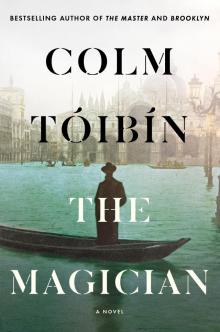 The Magician
The Magician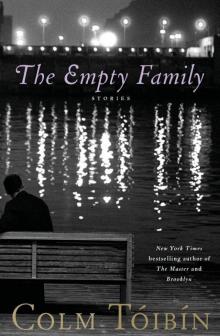 The Empty Family (v5)
The Empty Family (v5)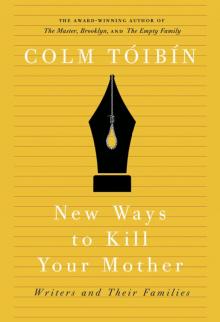 New Ways to Kill Your Mother
New Ways to Kill Your Mother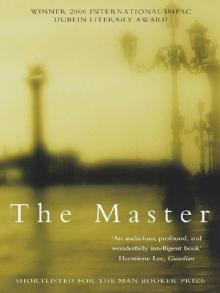 The Master
The Master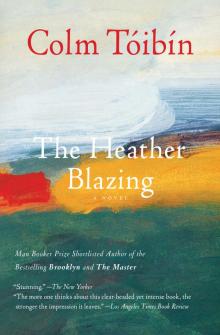 The Heather Blazing
The Heather Blazing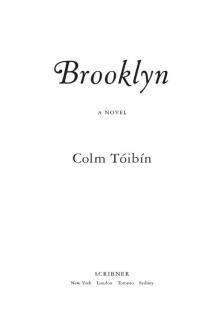 Brooklyn
Brooklyn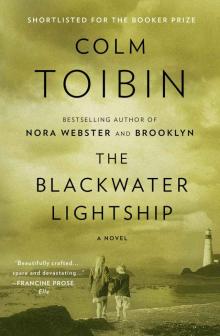 The Blackwater Lightship
The Blackwater Lightship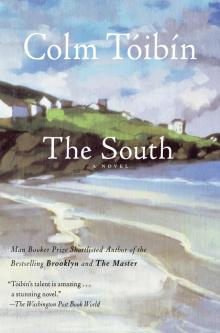 The South
The South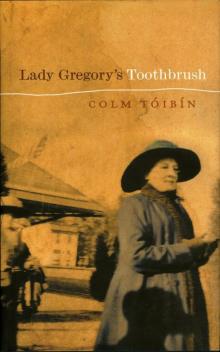 Lady Gregory's Toothbrush
Lady Gregory's Toothbrush House of Names
House of Names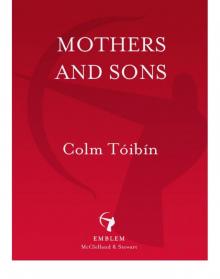 Mothers and Sons
Mothers and Sons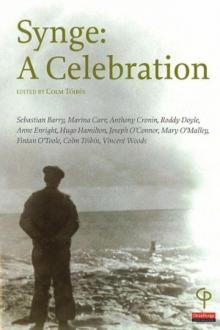 Synge
Synge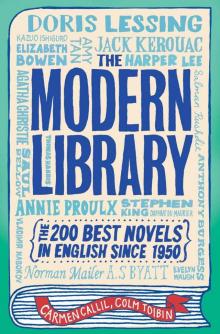 The Modern Library
The Modern Library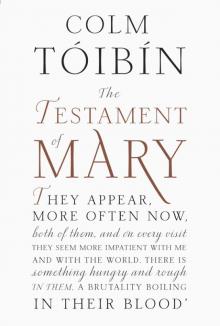 The Testament of Mary
The Testament of Mary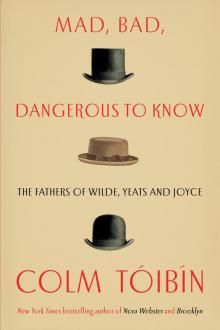 Mad, Bad, Dangerous to Know
Mad, Bad, Dangerous to Know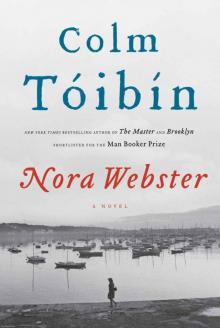 Nora Webster: A Novel
Nora Webster: A Novel